Resources
About Us
Australia Environmental Testing Market Size, Share, Forecast, & Trends Analysis by Product (Mass Spectrometers, pH Meters, ToC Analyzers), Sample, Contaminant, and End User (Agricultural Producers, Government and R&D Laboratories, Industrial Manufacturers)— Global Forecast to 2031
Report ID: MRICT - 1041324 Pages: 112 Sep-2024 Formats*: PDF Category: Information and Communications Technology Delivery: 2 to 4 Hours Download Free Sample ReportThe growth of the Australia environmental testing market is driven by enhanced government regulations for environmental protection, rising awareness of environmental pollution, and increasing demand for cost-effective and efficient customized testing services. However, elevated operating costs associated with environmental testing restrain the growth of this market.
Furthermore, the increasing adoption of environmental testing solutions by government and R&D laboratories is anticipated to generate growth opportunities for market stakeholders. On the other hand, the lack of awareness regarding environmental testing solutions is a major challenge impacting market growth.
Environmental pollution refers to the contamination of air, water, and soil by various agents, including microbes, organic compounds, heavy metals, pesticides, residual pharmaceuticals, and solid waste. Key contributors to this pollution include industrial activities, transportation, agriculture, and improper waste disposal practices. Air pollution involves the release of pollutants such as particulate matter (PM), nitrogen oxides, sulfur oxides, and volatile organic compounds (VOCs) into the atmosphere, contributing to respiratory diseases and climate change. Water bodies are contaminated by chemicals, plastics, heavy metals, and pathogens, adversely impacting aquatic ecosystems and drinking water quality. Additionally, harmful substances like pesticides, heavy metals, and industrial waste infiltrate the soil, degrading land quality and posing risks to food safety.
These pollutants lead to long-term damage to ecosystems, loss of biodiversity, and health risks such as cancers, neurological disorders, and respiratory diseases. Environmental testing plays a crucial role in identifying these contaminants in air, water, and soil while ensuring that industries adhere to regulatory standards and reduce their environmental impact. Growing awareness of these issues, coupled with increasingly stringent environmental regulations, corporate sustainability objectives, public demand for accountability, and advancements in pollution detection technologies, is driving the growth of the Australia environmental testing market.
To address growing concerns about pollution, climate change, and public health, government and R&D laboratories are increasingly adopting environmental testing solutions. These solutions enable effective monitoring of environmental conditions, regulatory enforcement, and advancement in pollution control research. Key tools—such as mass spectrometry, chromatography, molecular spectroscopy, TOC analyzers, pH meters, conductivity sensors, and dissolved oxygen analyzers—provide essential data for assessing contaminant levels. They are critical for identifying harmful pollutants, including microbial contaminants, organic compounds, heavy metals, and chemical residues, across air, water, and soil. This technology not only helps ensure compliance with environmental regulations but also aids in studying the impact of human activities on climate and identifying pollutants that contribute to global warming. Furthermore, it allows for the detection of harmful substances, such as heavy metals and pathogens, in water sources, ensuring effective monitoring of contamination levels.
As environmental regulations become more stringent and public awareness increases, governments are investing more in advanced testing technologies for improved enforcement and decision-making. This trend, along with the rising adoption of these solutions by government and research institutions, advancements in testing equipment, and growing public demand for environmental accountability, is expected to create significant growth opportunities for market stakeholders in the coming years.
Based on product, the Australia environmental testing market is segmented into mass spectrometers, chromatography, molecular spectroscopy, total organic carbon (TOC) analyzers, pH meters, dissolved oxygen analyzers, conductivity sensors, turbidity meters, and other products. In 2024, the conductivity sensors segment is expected to account for the largest share of 19.2% of the Australia environmental testing market. The substantial market share of this segment is driven by the growing demand for real-time, accurate, and cost-effective data that supports effective monitoring, early issue detection, and informed decision-making in water and ecosystem management. Additionally, it is extensively used in environmental testing, water quality monitoring, and various industrial applications.
However, the mass spectrometers segment is estimated to register the highest CAGR during the forecast period. This segment's growth is attributed to the increasing demand for accurate, sensitive, and versatile analytical tools that effectively tackle complex and evolving environmental challenges.
Based on sample, the Australia environmental testing market is segmented into wastewater/effluent, soil, water, air, and other samples. In 2024, the wastewater/effluent segment is expected to account for the largest share of 37.8% of the Australia environmental testing market. This significant market share of this segment is driven by stringent regulatory requirements, heightened environmental awareness, increased industrial activities, urbanization, and concerns regarding water scarcity and resource management.
Moreover, the wastewater/effluent segment is anticipated to record the highest CAGR during the forecast period.
Based on contaminant, the Australia environmental testing market is segmented into microbes, organic compounds, heavy metals, residues, and solids. In 2024, the microbes segment is expected to account for the largest share of 28.6% of the Australia environmental testing market. This segment's substantial market share is driven by the Australian government's strong focus on public health and food safety, alongside the increasing incidence of water and foodborne illnesses in the country.
However, the organic compounds segment is expected to register the highest CAGR during the forecast period. High emissions from various sources and the rising use of hydrocarbon-based products drive this growth. Additionally, growing awareness of environmental pollution and the increasing need to measure and monitor volatile organic compounds (VOCs) in different samples further contribute to this rapid growth.
Based on end user, the Australia environmental testing market is segmented into government and R&D laboratories, industrial manufacturers, agricultural producers, and other end users. In 2024, the industrial manufacturers segment is expected to account for the largest share of 36.9% of the Australia environmental testing market. This segment’s substantial market share is driven by rapid industrialization, the increasing use of chemicals in the industrial sector, and a growing need to ensure compliance with stringent environmental regulations.
However, the agricultural producers segment is expected to register the highest CAGR during the forecast period. This segment's growth is driven by the increasing demand for soil quality testing, the rising need for pesticide and chemical residue analysis, the growing emphasis on irrigation water quality management, and the focus on maximizing crop yield and quality in agriculture.
The report offers a competitive analysis based on an extensive assessment of the leading players’ product portfolios, geographic presence, and key growth strategies adopted in the last three to four years. Some of the key players operating in the Australia environmental testing market are Eurofins Environment Testing Australia Pty Ltd (Australia), Symbio Laboratories Pty Ltd (Australia), Envirolab Services Pty Ltd (Australia), ALS Limited (Australia), SGS SA (Switzerland), AB Sciex LLC (A subsidiary of Danaher Corporation) (U.S.), Agilent Technologies, Inc. (U.S.), Xylem Inc. (U.S.), Intertek Group plc (U.K.), HANNA Instruments Australia (Australia), Mérieux NutriSciences Corporation (U.S.), HACH Pacific Pty Ltd (Australia), ESS Earth Science (Australia), Thermo Fisher Scientific Inc. (U.S.), Bruker Corporation (U.S.), and Metrohm AG (Switzerland).
In June 2024, Agilent Technologies, Inc. (U.S.) introduced two new products: the 7010D Triple Quadrupole GC/MS and the 6545XT AdvanceBio LC/Q-TOF. The 7010D Triple Quadrupole GC/MS System is designed for the food and environmental sectors and offers enhanced precision and sensitivity in gas chromatography-mass spectrometry.
In June 2023, Agilent Technologies, Inc. (U.S.) introduced two new liquid chromatography-mass spectrometry systems (LCMS): the Agilent 6495D LC/TQ and the Agilent Revident LC/Q-TOF. The 6495D LC/TQ system is specifically designed for rigorous targeted analysis applications that demand the highest level of analytical sensitivity.
|
Particulars |
Details |
|
Number of Pages |
250 |
|
Format |
|
|
Forecast Period |
2024–2031 |
|
Base Year |
2023 |
|
CAGR (Value) |
9.8% |
|
Market Size (Value) |
$294.5 Million by 2031 |
|
Segments Covered |
By Product
By Sample
By Contaminant
By End User
|
|
Key Companies Profiled |
Eurofins Environment Testing Australia Pty Ltd (Australia), Symbio Laboratories Pty Ltd (Australia), Envirolab Services Pty Ltd (Australia), ALS Limited (Australia), SGS SA (Switzerland), AB Sciex LLC (A subsidiary of Danaher Corporation) (U.S.), Agilent Technologies, Inc. (U.S.), Xylem Inc. (U.S.), Intertek Group plc (U.K.), HANNA Instruments Australia (Australia), Mérieux NutriSciences Corporation (U.S.), HACH Pacific Pty Ltd (Australia), ESS Earth Science (Australia), Thermo Fisher Scientific Inc. (U.S.), Bruker Corporation (U.S.), and Metrohm AG (Switzerland) |
The Australia environmental testing market study focuses on market assessment and opportunity analysis based on the sales of Australia environmental testing products across the country and market segments. The study includes a competitive analysis based on an extensive assessment of the leading players’ product portfolios and key growth strategies adopted in the last 3–4 years.
The Australia environmental testing market is projected to reach $294.5 million by 2031, at a CAGR of 9.8% during the forecast period 2024–2031.
In 2024, the conductivity sensors segment is expected to account for the largest share of 19.2% of the Australia environmental testing market. The large market share of this segment is attributed due to increasing demand for real-time, accurate, and costeffective data to support effective monitoring, early issue detection, and informed decision-making for water and ecosystem management. Moreover, it is widely utilized in environmental testing, water quality monitoring, and various industrial applications.
The growth of the Australia environmental testing market is driven by increasing government regulations for environmental protection, the rising awareness regarding environmental pollution, and the growing need for cost-effective & time-saving customized environmental testing services. Furthermore, the rising adoption of environmental testing solutions among government and R&D laboratories is expected to generate growth opportunities for market stakeholders.
The key players operating in the Australia environmental testing market are Eurofins Environment Testing Australia Pty Ltd (Australia), Symbio Laboratories Pty Ltd (Australia), Envirolab Services Pty Ltd (Australia), ALS Limited (Australia), SGS SA (Switzerland), AB Sciex LLC (A subsidiary of Danaher Corporation) (U.S.), Agilent Technologies, Inc. (U.S.), Xylem Inc. (U.S.), Intertek Group plc (U.K.), HANNA Instruments Australia (Australia), Mérieux NutriSciences Corporation (U.S.), HACH Pacific Pty Ltd (Australia), ESS Earth Science (Australia), Thermo Fisher Scientific Inc. (U.S.), Bruker Corporation (U.S.), and Metrohm AG (Switzerland).
1. Introduction
1.1. Market Definition & Scope
1.2. Currency & Limitations
1.2.1. Currency
1.2.2. Limitations
2. Research Methodology
2.1. Research Approach
2.2. Data Collection & Validation Process
2.2.1. Secondary Research
2.2.2. Primary Research
2.3. Market Assessment
2.3.1. Market Size Estimation
2.3.2. Bottom-up Approach
2.3.3. Top-down Approach
2.3.4. Growth Forecast
2.4. Assumptions for the Study
3. Executive Summary
3.1. Overview
3.2. Market Analysis, by Product
3.3. Market Analysis, by Sample
3.4. Market Analysis, by Contaminant
3.5. Market Analysis, by End User
3.6. Competitive Analysis
4. Market Insights
4.1. Overview
4.2. Factors Affecting Market Growth
4.2.1. Impact Analysis of Market Dynamics
4.2.2. Increasing Government Regulations for Environmental Protection Driving the Demand for Environmental Testing Solutions
4.2.3. Rising Awareness Regarding Environmental Pollution Driving Market Growth
4.2.4. Growing Need for Cost-effective and Time-saving Customized Environmental Testing Services Supporting Market Growth
4.2.5. High Operating Costs Limiting the Adoption of Environmental Testing Solutions Among Small & Medium-sized Enterprises
4.2.6. Rising Adoption of Environmental Testing Solutions Among Government and R&D Laboratories Expected to Generate Growth Opportunities for Market Stakeholders
4.2.7. Lack of Awareness Regarding Environmental Testing Solutions Expected to Remain a Major Challenge
4.3. PORTER’S Five Forces Analysis
4.3.1. Bargaining Power of Suppliers
4.3.2. Bargaining Power of Buyers
4.3.3. Threat of Substitutes
4.3.4. Threat of New Entrants
4.3.5. Degree of Competition
4.4. PESTLE Analysis
4.4.1. Political Factors
4.4.2. Economic Factors
4.4.3. Social Factors
4.4.4. Technological Factors
4.4.5. Legal Factors
4.4.6. Environmental Factors
5. Australia Environmental Testing Market Assessment— by Product
5.1. Overview
5.2. Conductivity Sensors
5.3. Total Organic Carbon (TOC) Analyzers
5.4. Mass Spectrometers
5.5. Molecular Spectroscopy
5.6. Turbidity Meters
5.7. Chromatography
5.8. Dissolved Oxygen Analyzers
5.9. pH Meters
5.10. Other Products
6. Australia Environmental Testing Market Assessment— by Sample
6.1. Overview
6.2. Wastewater/Effluent
6.3. Air
6.4. Soil
6.5. Water
6.6. Other Samples
7. Australia Environmental Testing Market Assessment— by Contaminant
7.1. Overview
7.2. Microbes
7.3. Organic Compounds
7.4. Heavy Metals
7.5. Residues
7.6. Solids
8. Australia Environmental Testing Market Assessment— by End User
8.1. Overview
8.2. Industrial Manufacturers
8.3. Government and R&D Laboratories
8.4. Agricultural Producers
8.5. Other End Users
9. Competition Analysis
9.1. Overview
9.2. Key Growth Strategies
9.3. Competitive Benchmarking
9.4. Competitive Dashboard
9.4.1. Industry Leaders
9.4.2. Differentiators
9.4.3. Vanguards
9.4.4. Emerging Companies
9.5. Market Share Analysis
10. Company Profiles
10.1. Eurofins Environment Testing Australia Pty Ltd (A Subsidiary of Eurofins Scientific SE)
10.1.1. Company Overview
10.1.2. Financial Overview
10.1.3. Product Portfolio
10.1.4. Strategic Developments
10.2. SGS SA
10.2.1. Company Overview
10.2.2. Financial Overview
10.2.3. Product Portfolio
10.2.4. Strategic Developments
10.3. ALS Limited
10.3.1. Company Overview
10.3.2. Financial Overview
10.3.3. Product Portfolio
10.3.4. Strategic Developments
10.4. Intertek Group plc
10.4.1. Company Overview
10.4.2. Financial Overview
10.4.3. Product Portfolio
10.4.4. Strategic Developments
10.5. Agilent Technologies, Inc.
10.5.1. Company Overview
10.5.2. Financial Overview
10.5.3. Product Portfolio
10.5.4. Strategic Developments
10.6. Thermo Fisher Scientific Inc.
10.6.1. Company Overview
10.6.2. Financial Overview
10.6.3. Product Portfolio
10.6.4. Strategic Developments
10.7. AB Sciex LLC (A Subsidiary of Danaher Corporation)
10.7.1. Company Overview
10.7.2. Financial Overview
10.7.3. Product Portfolio
10.7.4. Strategic Developments
10.8. Xylem Inc.
10.8.1. Company Overview
10.8.2. Financial Overview
10.8.3. Product Portfolio
10.8.4. Strategic Developments
10.9. Bruker Corporation
10.9.1. Company Overview
10.9.2. Financial Overview
10.9.3. Product Portfolio
10.9.4. Strategic Developments
10.10. Mérieux NutriSciences Corporation
10.10.1. Company Overview
10.10.2. Product Portfolio
10.11. HACH Pacific Pty Ltd (A Subsidiary of Veralto Corporation)
10.11.1. Company Overview
10.11.2. Financial Overview
10.11.3. Product Portfolio
10.12. Metrohm AG
10.12.1. Company Overview
10.12.2. Product Portfolio
10.12.3. Strategic Developments
10.13. ESS Earth Sciences
10.13.1. Company Overview
10.13.2. Product Portfolio
10.13.3. Strategic Developments
10.14. HANNA Instruments Australia
10.14.1. Company Overview
10.14.2. Product Portfolio
10.15. Symbio Laboratories Pty Ltd
10.15.1. Company Overview
10.15.2. Product Portfolio
10.16. Envirolab Services Pty Ltd
10.16.1. Company Overview
10.16.2. Product Portfolio
11. Appendix
11.1. Available Customization
11.2. Related Reports
List of Tables
Table 1 Currency Conversion Rates (2018–2022)
Table 2 Australia Environmental Testing Market, by Product, 2022–2031 (USD Million)
Table 3 Australia Environmental Testing Market, by Sample, 2022–2031 (USD Million)
Table 4 Australia Environmental Testing Market, by Contaminant, 2022–2031 (USD Million)
Table 5 Australia Environmental Testing Market, by End User, 2022–2031 (USD Million)
Table 6 Recent Developments from Major Market Players (2021–2024)
List of Figures
Figure 1 Market Ecosystem
Figure 2 Key Stakeholders
Figure 3 Research Process
Figure 4 Primary Research Techniques
Figure 5 Key Executives Interviewed
Figure 6 Breakdown of Primary Interviews (Supply-side & Demand-side)
Figure 7 Market Sizing and Growth Forecast Approach
Figure 8 Key Insights
Figure 9 The Conductivity Sensors Segment to Account for the Largest Market Share in 2024
Figure 10 The Wastewater/Effluent Segment to Account for the Largest Market Share in 2024
Figure 11 The Microbes Segment to Account for the Largest Market Share in 2024
Figure 12 The Industrial Manufacturers Segment to Account for the Largest Market Share in 2024
Figure 13 PORTER'S Five Forces Analysis
Figure 14 Pestle Analysis
Figure 15 Australia Environmental Testing Market, by Product, 2024 Vs. 2031 (USD Million)
Figure 16 Australia Environmental Testing Market, by Sample, 2024 Vs. 2031 (USD Million)
Figure 17 Australia Environmental Testing Market, by Contaminant, 2024 Vs. 2031 (USD Million)
Figure 18 Australia Environmental Testing Market, by End User, 2024 Vs. 2031 (USD Million)
Figure 19 Key Growth Strategies Adopted by Leading Market Players (2021–2024)
Figure 20 Vendor Market Positioning Analysis (2021–2024)
Figure 21 Competitive Dashboard: Australia Environmental Testing Market
Figure 22 Australia Environmental Testing Market: Market Shares of Key Players (2023)
Figure 23 Eurofins Scientific SE: Financial Overview (2023)
Figure 24 SGS SA: Financial Overview (2023)
Figure 25 ALS Limited: Financial Overview (2023)
Figure 26 Intertek Group plc: Financial Overview (2023)
Figure 27 Agilent Technologies, Inc.: Financial Overview (2023)
Figure 28 Thermo Fisher Scientific Inc.: Financial Overview (2023)
Figure 29 Danaher Corporation: Financial Overview (2023)
Figure 30 Xylem Inc.: Financial Overview (2023)
Figure 31 Bruker Corporation: Financial Overview (2023)
Figure 32 Veralto Corporation: Financial Overview (2023)
The Australia environmental testing market is expected to reach USD 294.5 million by 2031, at a CAGR of 9.8% during the forecast period (2024–2031).
The growth of the Australia environmental testing market is driven by increasing government regulations for environmental protection, rising awareness regarding environmental pollution, and the growing need for cost-effective and time-saving customized environmental testing services. However, the high operating costs involved in environmental testing restrain the growth of this market.
Furthermore, the rising adoption of environmental testing solutions among government and R&D laboratories is expected to generate growth opportunities for market stakeholders. However, the lack of awareness regarding environmental testing solutions is a major challenge impacting market growth.
Eurofins Environment Testing Australia Pty Ltd. (A Subsidiary of Eurofins Scientific SE)
Established in 1975 and headquartered in Dandenong South, Australia, Eurofins Environment Testing Australia Pty Ltd specializes in the analysis of contaminated soils, solid wastes, waste oils, wastewater, groundwater, drinking water, saline and freshwater streams, and industrial emissions. The company provides analytical testing services to environmental sectors and government agencies. With a presence in all major Australian cities, Eurofins Environment Testing Australia offers a full range of environmental testing and monitoring services. Additionally, they deliver expert consultation on contaminated site remediation, environmental site assessments, groundwater monitoring, and workplace air and stack emission analysis.
The company analyzes a wide variety of soil samples pertinent to contaminated land assessments, solid waste management, filter cake landfill disposal, agricultural land evaluation, paints, sediments from oceans and rivers, sludges, environmental residues, dust, and construction materials.
Founded in 1878 and headquartered in Geneva, Switzerland, SGS SA is a provider of testing, inspection, and certification services. The company provides comprehensive soil testing services to evaluate soil quality, contamination levels, and suitability for various applications. SGS offers water testing solutions to assess water quality for contaminants, including heavy metals, microbiological pathogens, and chemical pollutants. Their air quality testing services measure pollutants such as particulate matter, VOCs, and other harmful substances. Additionally, SGS conducts waste testing to analyze the composition and hazardous characteristics of waste materials. The company supports businesses in developing sustainability strategies and ensuring compliance with local and international environmental regulations. SGS SA operates through five reportable segments: Industries & Environment, Natural Resources, Connectivity & Products, Health & Nutrition, and Business Assurance.
Through its subsidiaries and a strong distribution network, the company has a strong geographical presence across Europe, Africa & Middle East, the Americas, and Asia-Pacific. Some of its subsidiaries are Groupe SGS France (France), SGS Analytics Denmark A/S (Denmark), SGS Analytics Sweden AB (Sweden), SGS Australia (Australia), and SGS Austria Controll-Co. Ges.m.b.H. (Austria). As of December 2023, the company had a headcount of 99,600 employees worldwide.
ALS Limited
Founded in 1863 and headquartered in Queensland, Australia, ALS Limited provides comprehensive environmental testing, laboratory services, and scientific solutions across industries. The company delivers testing solutions for a comprehensive range of site assessment and remediation services, including groundwater monitoring, soil testing, and leachate testing. ALS offers a diverse array of analyses, analytes, and sampling media, positioning itself as a leading provider of water-focused sampling and analytical solutions. Their water testing services address various applications, including drinking/potable water, desalination and recycled water, groundwater, and wastewater treatment, as well as effluent and industrial water analysis.
ALS specializes in sampling and analyzing surface waters to monitor routine parameters and emerging contaminants, supporting project requirements. The company offers testing services designed to meet effluent limits and discharge licenses in compliance with local and national regulatory agency standards for wastewater. ALS operates through two reportable segments: Commodities and Life Sciences.
Founded in 1885 and headquartered in London, U.K., Intertek Group plc delivers cutting-edge Assurance, Testing, Inspection, and Certification (ATIC) services to clients worldwide. The company specializes in environmental testing across a wide range of sample types, including water, soil, air, sludge, petroleum, and chemicals. Intertek provides advanced contamination detection and analysis for various materials, including liquids, solids, gases, surfaces, powders, particles, metals, polymers, and formulated chemicals. Additionally, the company offers expert consultancy and testing in environmental microbiology, encompassing a comprehensive range of microbiological and chemical assessments for air and potable water quality.
Intertek provides a comprehensive portfolio of water testing services tailored to various industries, including waste management, utilities, manufacturing, and industrial sectors. The company’s laboratories conduct water quality testing across a wide range of parameters. Intertek operates through five reportable segments: Consumer Products, Industry and Infrastructure, World of Energy, Corporate Assurance, and Health and Safety.
Agilent Technologies Inc.
Incorporated in 1999 and headquartered in Delaware, U.S., Agilent Technologies Inc. is a global leader in the life sciences, diagnostics, and applied chemical markets. The company offers a comprehensive suite of products and services, including analytical instruments, software, services, and consumables for laboratory processes. Agilent’s solutions span a wide range of areas, such as analytical instruments, life sciences tools, clinical and diagnostic testing, and vacuum and leak detection. The company serves a variety of industries, including pharmaceuticals, energy and chemicals, biopharma, food and beverage, and applied materials. Agilent's products are employed in numerous applications, including cannabis and hemp testing, clinical diagnostics, food and beverage testing, materials testing and research, companion diagnostics, and environmental analysis.
The company offers a wide range of testing products, including gas chromatography, HPLC and UHPLC, spectrometry, and spectroscopy solutions. It operates through three reportable segments: Life Sciences & Applied Markets, Diagnostics and Genomics, and Agilent CrossLab.
Founded in 1956 and headquartered in Massachusetts, U.S., Thermo Fisher Scientific Inc. is a leading provider of analytical instruments and clinical development solutions, specialty diagnostics, and laboratory services in the pharmaceutical and biotechnology sectors. The company provides a complete portfolio of chromatography products specifically designed for applications in environmental testing, food and beverage, pharmaceuticals, biopharma, and the oil and gas industries.
Thermo Fisher offers a range of laboratory instruments and process analytical systems specifically designed to address challenges in water analysis, such as drinking water safety and wastewater treatment. Their solutions encompass a comprehensive array of analytical technologies, and sample clean-up and moisture extraction reagents for soil, ensuring reliable, accurate, and precise results. Furthermore, Thermo Fisher provides environmental analysis solutions to government agencies, contract testing organizations, and other laboratories for the detection and quantification of environmental contaminants.
AB Sciex LLC (A Subsidiary of Danaher Corporation)
Founded in 1970 and headquartered in Massachusetts, U.S., AB Sciex LLC provides advanced mass spectrometry and capillary electrophoresis solutions tailored for biomedical and environmental applications. The company addresses critical analytical challenges in quantification and characterization, enabling impactful research and transformative outcomes. Sciex's technologies deliver a wide range of testing solutions for various sample types, including industrial effluents, agricultural and urban runoff, municipal wastewater, as well as soil, air, and landfill leachates.
The company’s environmental testing products are employed across various applications, including contaminant analysis, industrial and agrochemical analysis, and water and wastewater analysis. It boasts a strong global presence with operations in countries such as Argentina, Australia, Austria, Belgium, Brazil, Malaysia, China, France, Germany, and more, backed by a robust network of subsidiaries and a solid distribution framework. Key subsidiaries include AB Sciex Australia Pty Ltd (Australia), Promolab (Pty) Ltd (South Africa), Bio Esanco S.A. (Argentina), AB Sciex Austria GmbH (Austria), AB Sciex Netherlands B.V. (Netherlands), and Straits Scientific (M) Sdn Bhd (Malaysia).
Founded in 2011 and headquartered in Washington, U.S., Xylem Inc. provides advanced solutions in water quality monitoring, including sensors, precision analytics, and filtration and treatment technologies, aimed at optimizing the management of drinking water and wastewater. The company specializes in comprehensive services such as data collection, mapping, profiling, and survey systems, catering to various environmental sectors, including groundwater, surface water, ocean monitoring, aquaculture, and agriculture. Xylem’s portfolio includes instruments, sensors, software, and systems designed to improve and support wastewater treatment operations, including water resource recovery facilities, as well as compliance and process monitoring activities.
Moreover, the company offers a variety of products for environmental testing, including analyzers, controllers, monitors, transmitters, sensors, and electrodes, all aimed at enhancing process efficiency while reducing operation and maintenance (O&M) costs. Xylem Inc. is structured into four reportable segments: Water Infrastructure, Applied Water, Measurement and Control Solutions, and Integrated Solutions and Services.
Bruker Corporation
Founded in 1960 and headquartered in Massachusetts, U.S., Bruker Corporation specializes in the development, manufacturing, and distribution of scientific instruments and analytical diagnostic solutions. Their testing products are engineered to detect, measure, and visualize the structural characteristics of chemical, biological, and industrial material samples. Bruker's solutions are employed across a diverse array of applications, including life sciences research, pharmaceuticals, biotechnology, applied markets, cell biology, clinical research, microbiology, in vitro diagnostics, nanotechnology, and materials science research.
The company offers a diverse range of products for various environmental testing applications, including air analysis, heavy metals detection, microplastics assessment, plant and soil analysis, and water analysis. Bruker provides an extensive array of technology platforms, including mass spectrometry, gas and liquid chromatography, spark-optical emission spectroscopy, atomic force microscopy, and infrared and Raman molecular spectroscopy. The company operates through four reportable segments: Bruker Scientific Instruments (BSI) BioSpin, BSI CALID, BSI Nano, and Bruker Energy & Supercon Technologies (BEST).
Mérieux NutriSciences Corporation
Founded in 1897 and headquartered in Chicago, U.S., Mérieux NutriSciences Corporation provides a comprehensive array of solutions, including consultancy services to identify, manage, and mitigate risks, as well as analytical services to detect contaminants and anticipate quality issues. The company provides comprehensive water quality testing services for a diverse clientele, including both public and private sectors, to ensure safety in public recreational areas such as pools & spas and to monitor water quality for agricultural and industrial applications. Additionally, the company conducts air quality testing to evaluate environmental factors and monitor air quality across various industries—including food, packaging, manufacturing, pharmaceuticals, medical, and environmental sectors—focused on safeguarding health and ensuring the well-being of consumers and workers.
The company has a strong geographical presence in Australia, China, India, New Zealand, Saudi Arabia, France, Germany, Ireland, Italy, and the Netherlands, among other places. It has 8,000 employees worldwide.
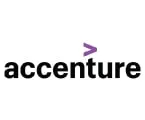

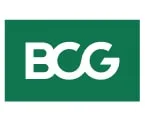
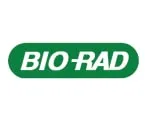
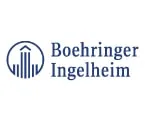
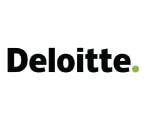
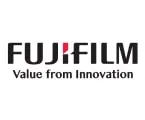
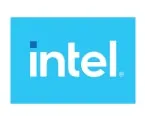
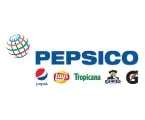
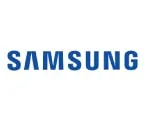
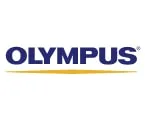
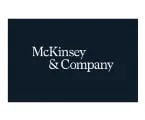
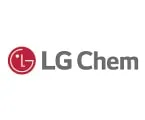
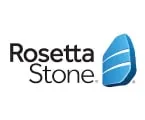
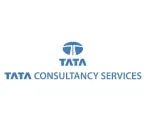
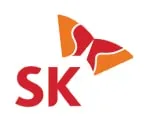
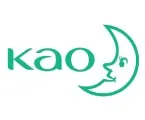
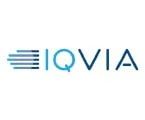
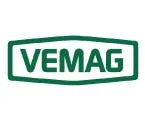
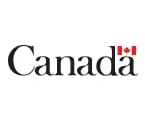
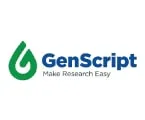
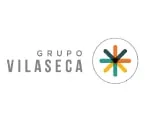

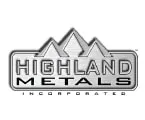
Published Date: Jan-2025
Published Date: Jan-2025
Published Date: Jun-2024
Published Date: Nov-2022
Published Date: Oct-2022
Please enter your corporate email id here to view sample report.
Subscribe to get the latest industry updates